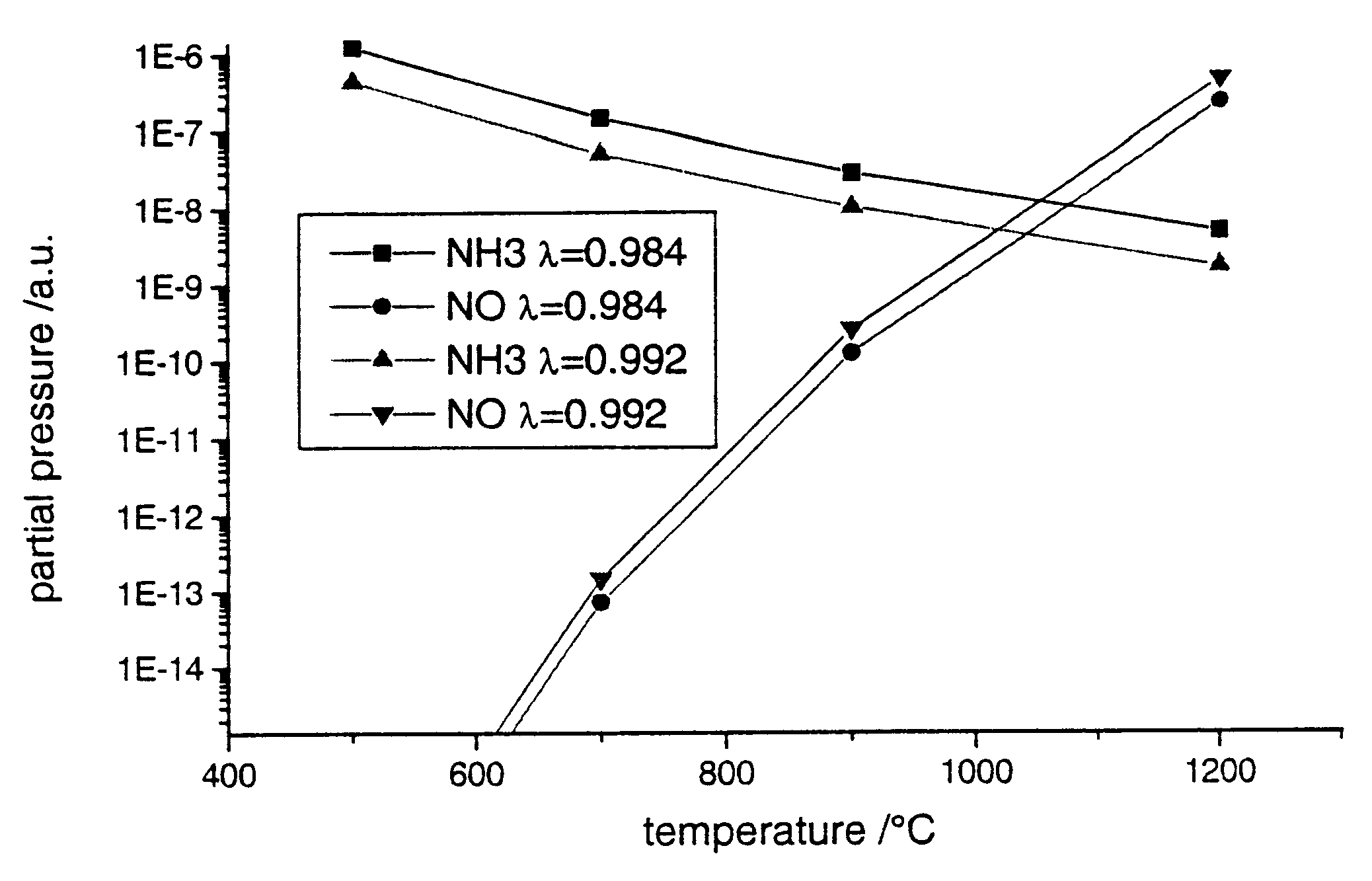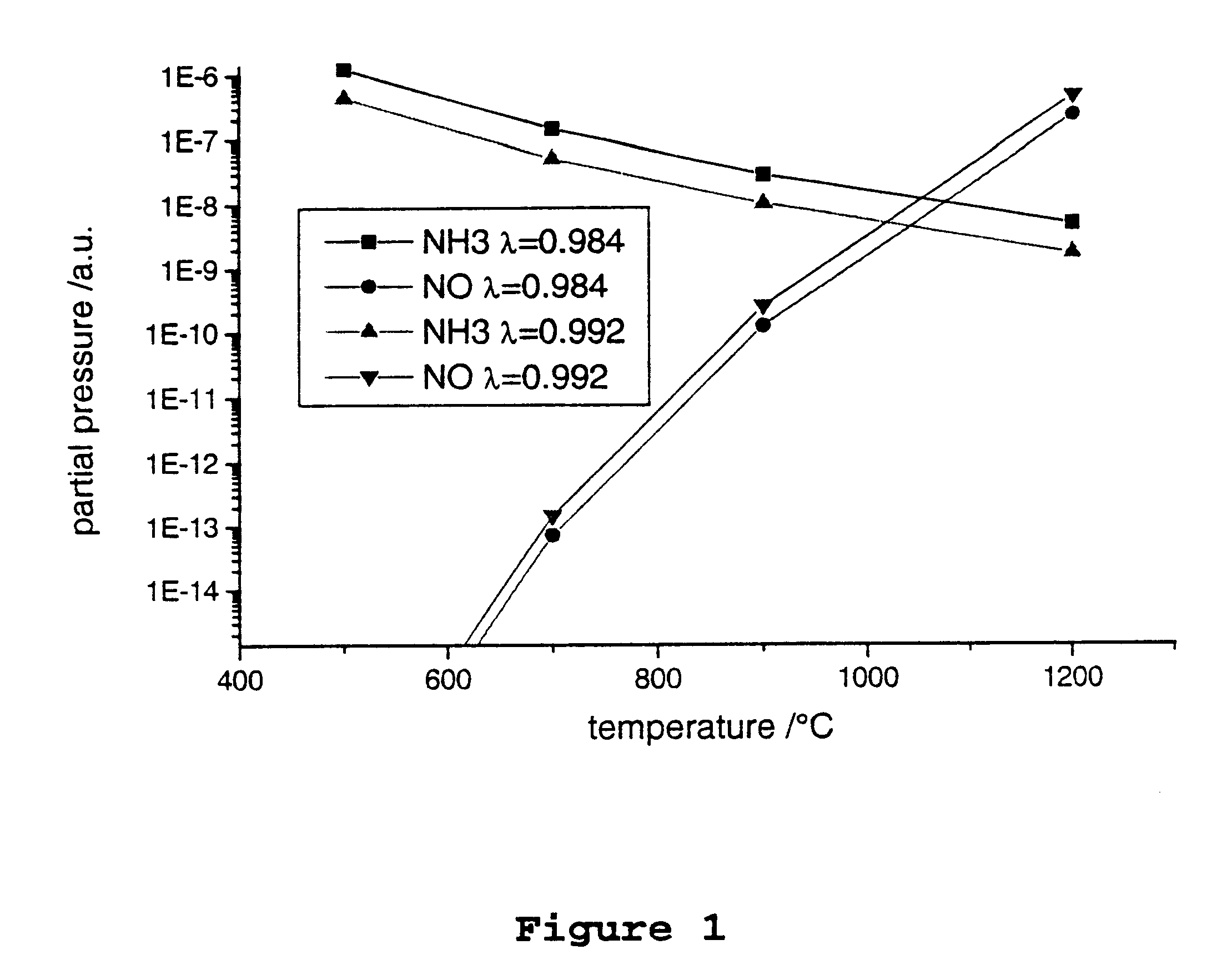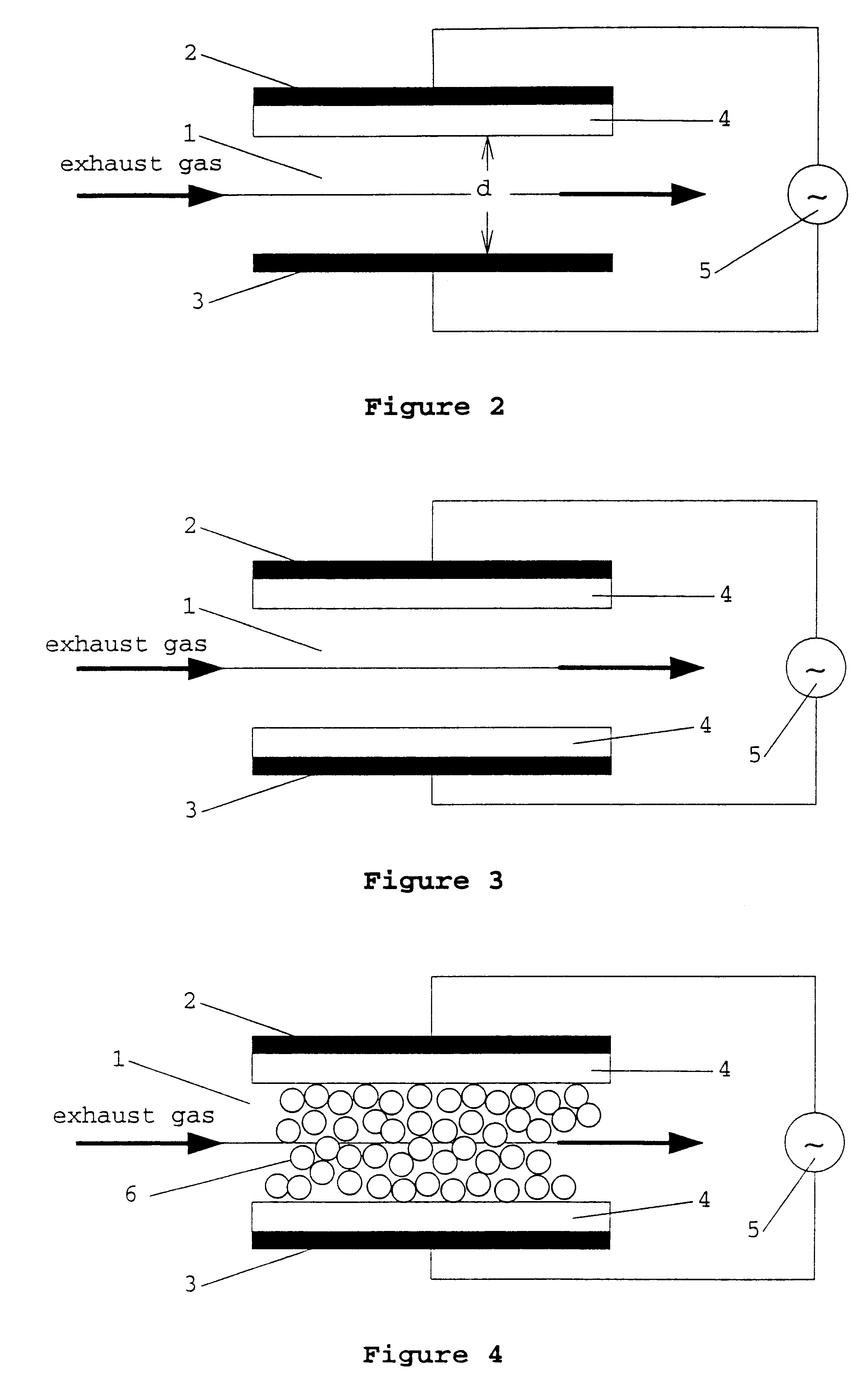Process for the selective catalytic reduction of the nitrogen oxides contained in a lean exhaust gas
a technology of selective catalytic reduction and nitrogen oxides, which is applied in the direction of metal/metal-oxide/metal-hydroxide catalysts, machines/engines, arsenic compounds, etc., can solve the problems of nitrogen oxides no.sub.x that are also formed in the combustion of fuel, and cannot be reduced in sufficient amount to nitrogen oxides
- Summary
- Abstract
- Description
- Claims
- Application Information
AI Technical Summary
Benefits of technology
Problems solved by technology
Method used
Image
Examples
Embodiment Construction
The coaxial reactor of FIG. 7 was used for the following investigations. Both the outer and inner pipes consisted of 2 mm thick quartz glass. The outer pipe had an external diameter of 4 cm and the inner pipe an internal diameter of 2.6 cm. The length of the reactor was 20 cm and the length of the electrodes 16 cm. The gas discharge space between the two quartz pipes was filled with a palladium pellet catalyst (3.2 g of palladium and 35 g of barium oxide per 1 litre of .gamma.-aluminum oxide pellets).
The synthesis gas mixture shown in Table 1 was passed through the reactor at a volume flow of 4.5 Nl / min at atmospheric pressure and a temperature of 100.degree. C. The product d*p was 6 mm*bar. A barrier discharge was ignited in the reactor by applying an alternating voltage having a frequency of 1kHz and an amplitude of about 11 kV.
The measurements were carried out at room temperature.
The synthesis gas mixture of Table 1 is lean, in other words it has a supra-stoichiometric oxygen con...
PUM
| Property | Measurement | Unit |
|---|---|---|
| frequency | aaaaa | aaaaa |
| frequency | aaaaa | aaaaa |
| frequency | aaaaa | aaaaa |
Abstract
Description
Claims
Application Information
 Login to View More
Login to View More - R&D
- Intellectual Property
- Life Sciences
- Materials
- Tech Scout
- Unparalleled Data Quality
- Higher Quality Content
- 60% Fewer Hallucinations
Browse by: Latest US Patents, China's latest patents, Technical Efficacy Thesaurus, Application Domain, Technology Topic, Popular Technical Reports.
© 2025 PatSnap. All rights reserved.Legal|Privacy policy|Modern Slavery Act Transparency Statement|Sitemap|About US| Contact US: help@patsnap.com



